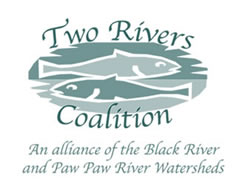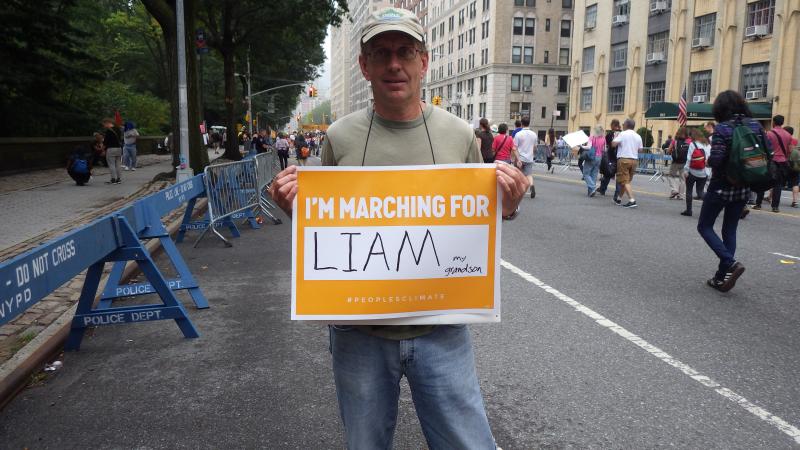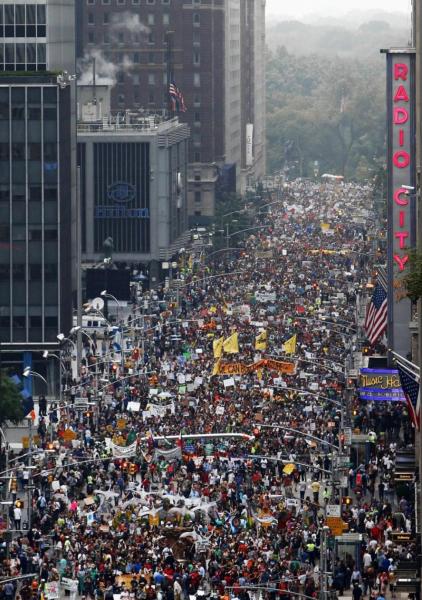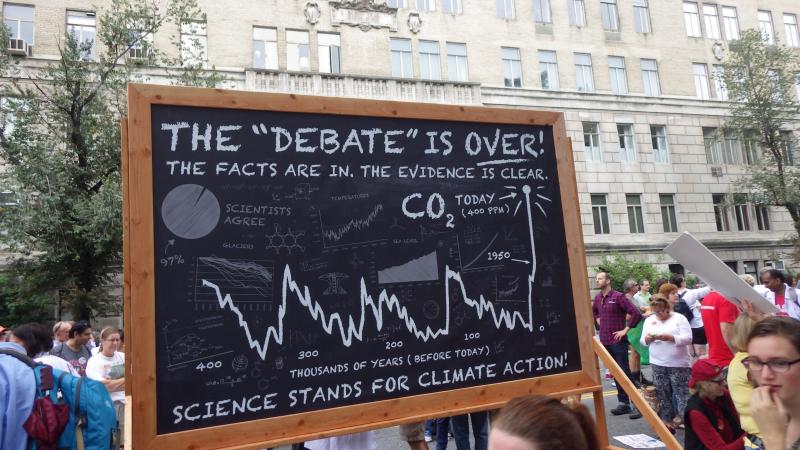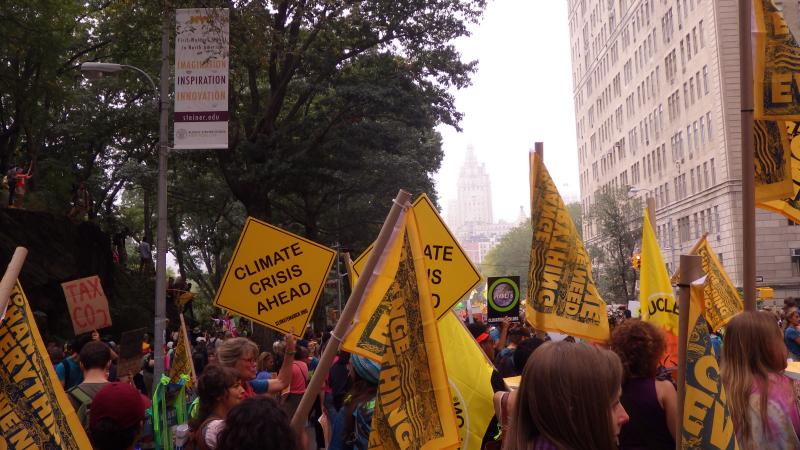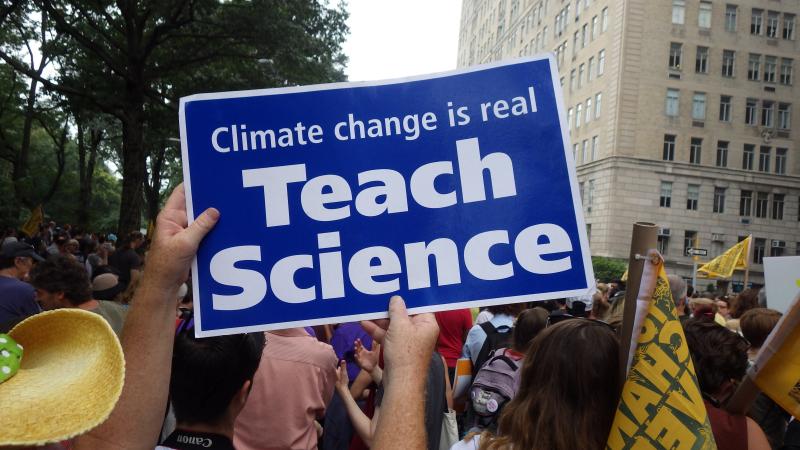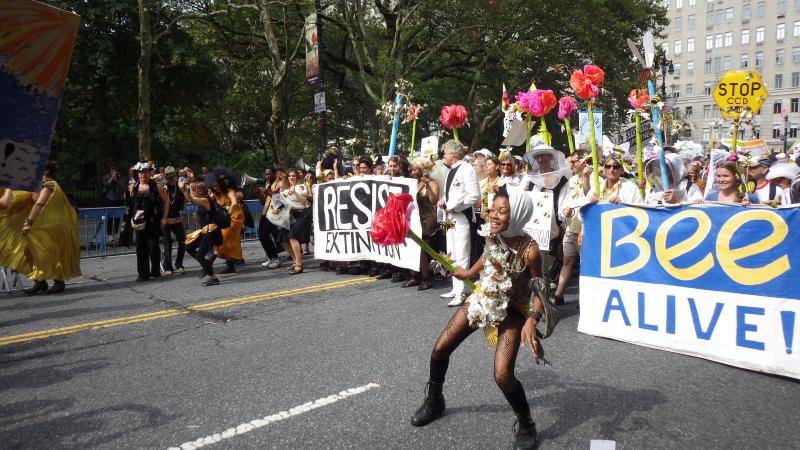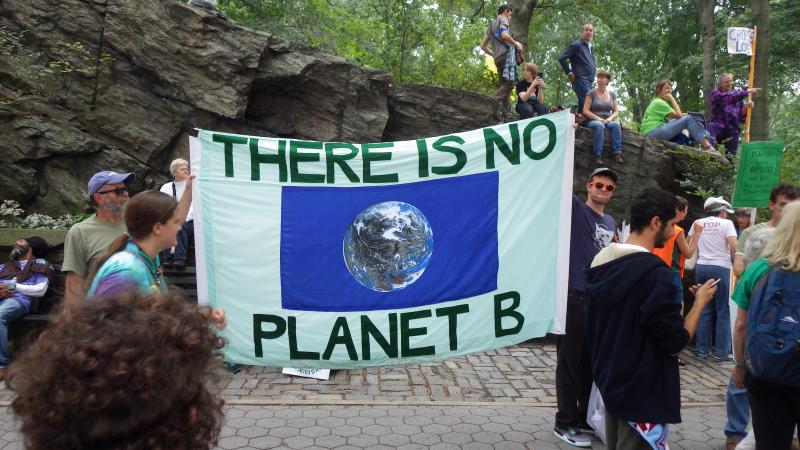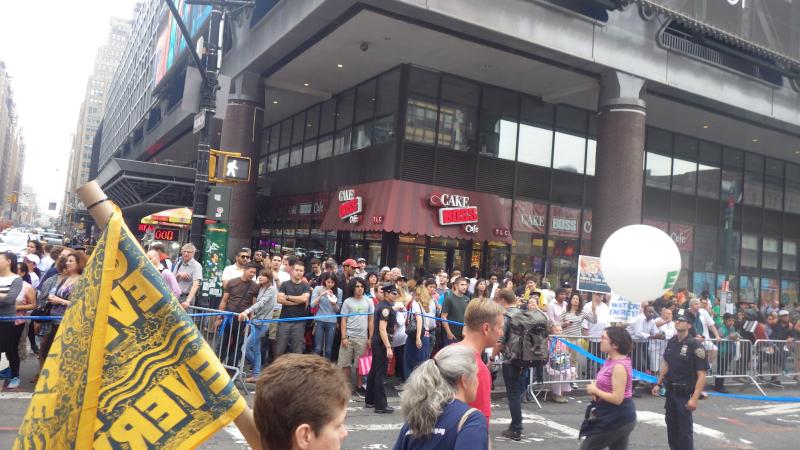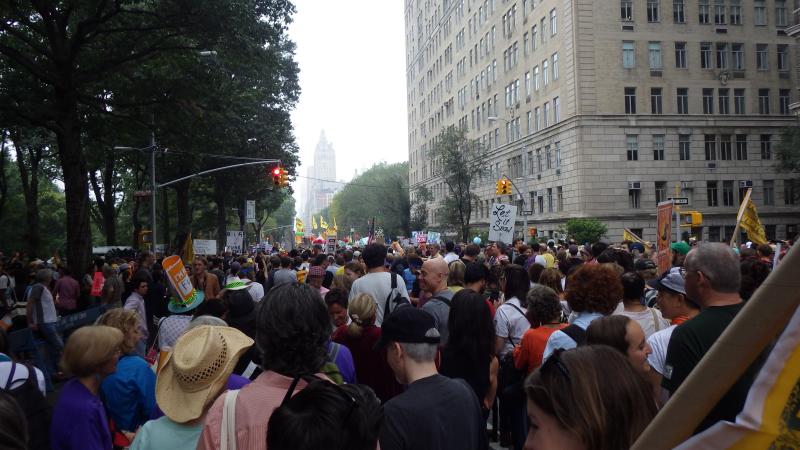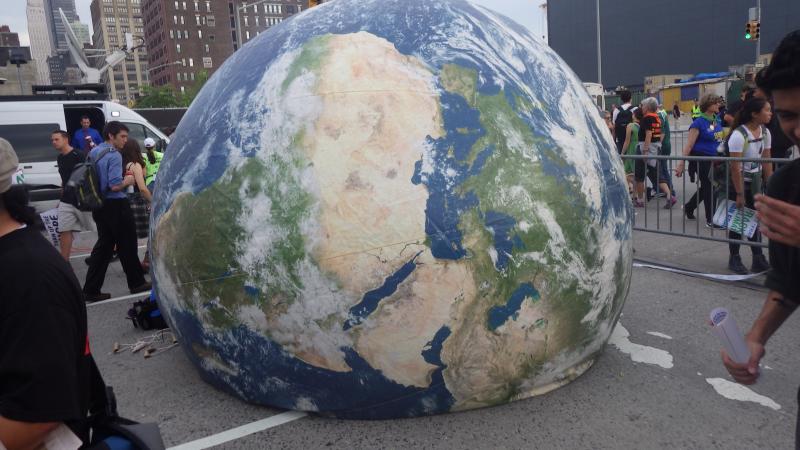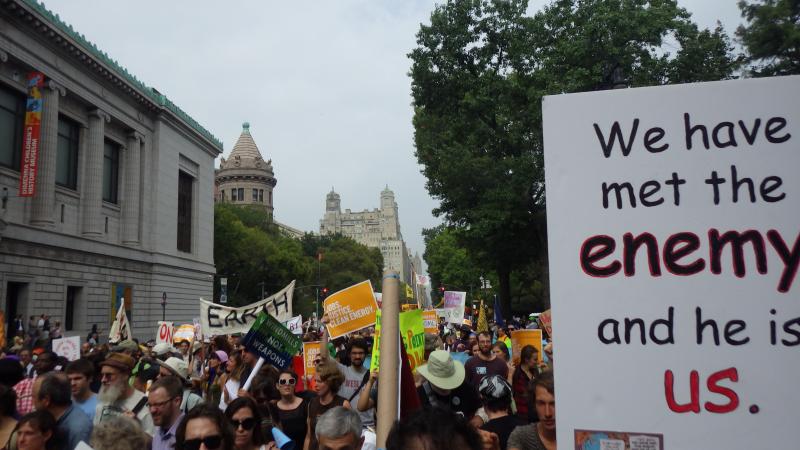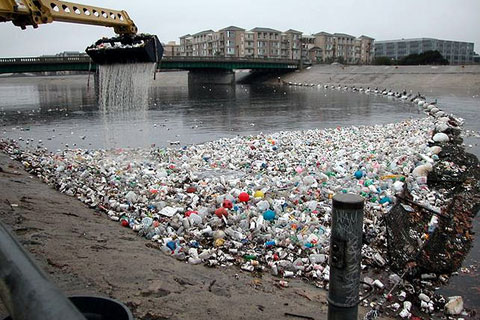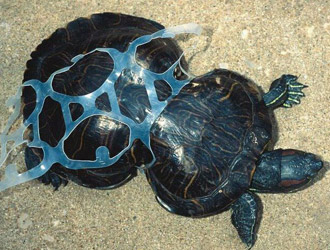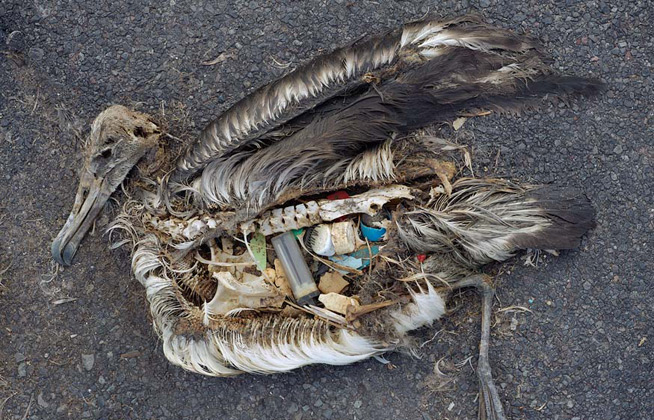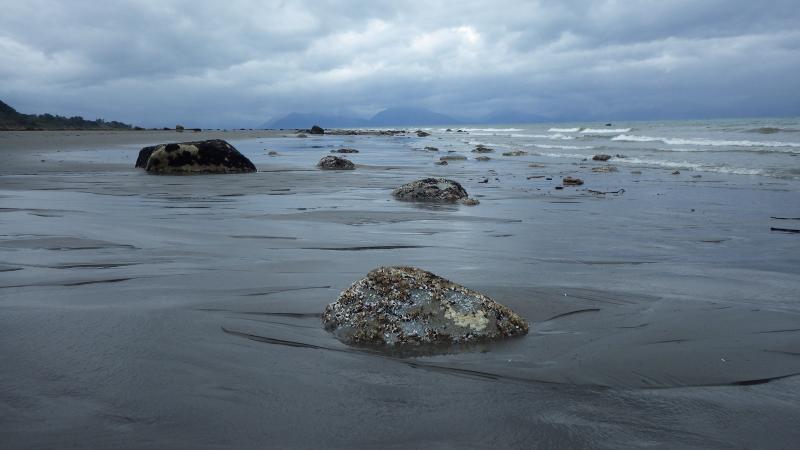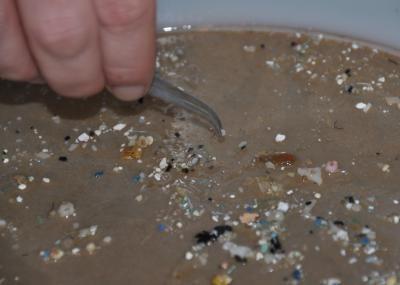Home>Let It Flow
Let It Flow Blog
Tipping points have been on my mind a lot lately. Merriam-Webster defines tipping point as follows: The critical point in a situation, process, or system beyond which a significant and often unstoppable effect or change takes place. Perhaps not coincidentally, the first known use of the term occurred in 1959, about the same time scientists started measuring the amount of CO2 in the atmosphere at the Mauna Loa observatory in Hawaii.
Arctic Sea Ice
You know there was a reason we stole Panama from Colombia and spent millions of dollars and thousands of lives putting a canal through the hellish, mosquito infested swamps of Central America. It was because you couldn’t sail around the top of North America. Explorers searched in vain for centuries for the fabled Northwest Passage but it didn’t exist. Too much ice, end of story; except now, because in this new climate era some call the Anthropocene, ships can navigate through the Arctic Ocean in summer. This is because the sea ice is melting, as evidenced by the fact that the extent of summertime ice in the Arctic Ocean is currently 500,000 square miles less than its long term average. The melting of Arctic sea ice is not just bad for polar bears. There is something called the albedo effect, which causes a bright shiny surface like a polar icecap to reflect most of the sunlight that strikes it back into outer space. But when that ice is no longer present and the sunlight strikes a relatively dark surface like open water, much more radiant energy is absorbed. So the bottom line is that if we ever lose the protection of our shiny bright Arctic ice cap, the planet will suddenly start absorbing a lot more sunlight and the earth will get a lot hotter. Yes, there was still minimal ice cover on the Arctic Ocean this summer, but the ice is very thin. Scientists warn that we could be within a few years of ice free summers in the Arctic Ocean, and no one can predict the outcome if that tipping point occurs.
Methane Emissions
It was interesting spending a month in Alaska this summer. Alaskans realize they are on the front lines of climate change and one reason they know this is the permafrost is melting. It is somewhat ironic that Homo sapiens have to be incredibly creative to build a pipeline over the melting permafrost but never stop to think that the oil being transported through the pipeline is contributing to the climate warming causing the permafrost to melt in the first place. But the real scary thing about the melting permafrost is that methane gas previously trapped in the frozen ground is now being released in large quantities. Methane is a greenhouse gas just like CO2, except it is 30 times more potent. This means that methane gas in our atmosphere will trap 30 times as much heat as CO2. Again, scientists are concerned that there is a point where so much methane is being released from thawing permafrost that global climate change will occur regardless of any Johnny-come-lately efforts humans takes. [As a quick aside, one of the dirty little secrets about fracking that no one ever talks about is methane gas emissions. Fracking wells vent methane directly into the atmosphere. Therefore, while we definitely need to be concerned about protecting our ground water, it is important to realize the other ways fracking threatens our environment.]
Ocean Acidification
Do you know where most of our oxygen comes from? I was surprised to find out that as much as 70% of our oxygen is produced by microscopic plankton in the ocean, phytoplankton to be exact. Unfortunately, this basic building block of the ocean food chain is threatened by rising carbon levels in our atmosphere. Hold on, the skeptics and climate deniers are saying, what does excess carbon in the atmosphere have to do with the ocean? Well, it’s called ocean acidification. Basically, this means that some of the carbon humans are pumping into the air is being absorbed by the ocean and that carbon is actually changing the chemistry of sea water. Ocean water is now 26% more acidic than before the Industrial Revolution. And some species of phytoplankton are suffering from that increase in acidity. It doesn’t take a genius to understand what could happen to the ocean eco-system if a keystone species is eliminated from the base of the food chain.
Societal Tipping Point
All of which leads to how I spent last Saturday and Sunday nights. First, I was on a bus all night Saturday headed for New York City. Then, I got back on the same bus and spent all Sunday night riding back to Michigan. In between, I hope I helped push our society past a tipping point of its own. I am talking about the People’s Climate March in NYC on Sunday, September 21. Over 400,000 people marched for hours to protest global climate change that we all know is happening but few leaders are willing to confront. The immediate catalyst for the march was the U.N. Climate Summit of 125 world leaders which was beginning the next day in New York. A broad coalition of environmental organizations joined forces to show the world’s leaders that global climate change is a threat that ordinary people are not going to allow their leaders to ignore any more. The goal of the march was simple; create the broadest possible coalition and mobilize as many bodies as possible. This was a worldwide demonstration with over 2,600 events occurring in 162 countries. But the biggest event was targeted for New York because of the U.N. Climate Summit. All we were hoping for was an impressively large number of people. The reality was staggering: over 400,000 people showed up, waited for hours and hours, and then marched miles through the streets of the city.
My experience, I believe, was typical; I assembled at the back of the march on the west side of Central Park about one mile from the beginning point and 30 minutes before the scheduled 11:30 a.m. start time. I waited and waited and looked at all the groups around me carrying banners: people protesting mountaintop removal, fracking, the Keystone pipeline. I realized what all these groups had in common; they were all opposed to the headlong rush to squeeze the last hydro-carbons from the earth regardless of environmental or human cost. And those human and environmental costs are not just the obvious one like pipeline spills. All fossil fuels {coal, oil, natural gas} do double duty ravaging our environment, initially during the extraction and transportation and then, later, as a greenhouse gas.
After two hours, we still had not begun to move at the end of the parade because of the immense numbers of people in front of us. But it was impossible to get bored. There were small bands playing, people dancing, community organizers sharing ideas. Then, at 12:58 p.m., all up and down 8th Avenue everything stopped as people held up their hands and became quiet. It was a minute of silence to remember all the people in the front lines of climate change. People who have already suffered from extreme weather events, like the victims of Typhoon Haiyan in the Philippines in 2013, Superstorm Sandy in 2012, and Pacific Islanders watching their homelands being slowly swallowed by the sea. And after that symbolic minute of solidarity came the LOUDEST NOISE I had ever heard: 400,000 people sounding the climate alarm with bells, whistles, drums and the power of their voices. Of course, our planet has been sounding its own climate alarm for years now, while most of us pretended not to hear. But the roar that erupted from 400,000 marchers that day may prove impossible to ignore.
Finally, at close to 2:00 p.m., our section at the rear of the march started moving. The people in my immediate vicinity had come from all over {California, Vermont, even Brazil} in order to participate in something they clearly hoped would be historic. The marchers near me were also impressively diverse: an artist from Brooklyn, a cleric from Petoskey, not to mention a retired lawyer, part-time environmentalist and full-time grandfather from Van Buren County. And there were so many witty banners and floats. Some of my favorite slogans: “Resist Extinction!”, “There is no Planet B”, and “Nature Bats Last”. We marched down 8th Avenue while helicopters zoomed overhead. We knew this had been promoted as a family friendly and completely peaceful march, so we were hoping the police helicopters were simply trying to accurately count the huge throngs of people protesting governmental inaction on this most important issue of our time. We marched past the headquarters of Fox News and gave it a figurative friendly finger salute in recognition of the role it has played in promoting misinformation about the impending climate crisis. In most places there were large crowds of New Yorkers watching and cheering us, even on a Sunday afternoon. Sometimes marchers shouted at women coming out of the trendy stores, ”Stop shopping and join us!”
Apparently, there were celebrities at the march: people like Leonardo DiCaprio, Al Gore, and Sting. But they were long gone {as were the food trucks} by the time the tail-end of the march staggered into the finish area at 11th Ave and 34th Street around 5:00 p.m. There were no speeches; the NYPD had refused permission for any large scale speechmaking. And from a logistical standpoint, I could almost understand: exactly where could 400,000 people have assembled at the same time to listen to anyone? In retrospect, the absence of speeches didn’t detract from the experience at all. After the march, I read an interview with Bill McKibben, co-founder of 350.org, who likely would have been a speaker. He said his message would have been simple and to the point: Climate change is a serious threat to humanity. It may soon be too late to do anything about it. Mass mobilization of people from around the world like the People’s Climate March is the first step in forcing our governments to take the actions we all know are necessary.
And what are those actions to stave off climate disaster in the future? Well, that is the hard part. We have to use less fossil fuels; all of us. Remember, Americans on a per capita basis use three times as much carbon as the world average. The simplest way for our society to reduce its dependence on fossil fuels is to use the market economy we have in place. The problem is that we are all complicit in what economists call “negative environmental externalities”. This means the cost of the excess carbon accumulating in our atmosphere is not being paid by anyone currently. But if there is one thing Americans know, it’s that THERE IS NO SUCH THING AS A FREE LUNCH. If the government sends you a check, it is being funded by a taxpayer somewhere. If I dump toxic waste in the stream that runs through my land, my neighbor downstream will suffer. If we burn coal, gasoline, and natural gas, future generations of humans will pay a very high price in terms of climate chaos. So what is needed right now is to make everyone pay the full cost of the dirty energy that they use. One way to do that is to simply impose a carbon tax on industries that burn fossil fuels. Those industries will then pass that cost on to their customers. This will make alternative energy more competitive because wind and solar energy will now be on a more level playing field with coal and oil when the true costs of fossil fuels are taken into account. And the tax revenue collected by the government can be allocated to helping further develop clean energy {the same way we have subsidized dirty energy for decades through the tax code}. Also, it will be necessary to redistribute some of that fossil fuel tax revenue to ease the burden on the parts of our society least able to bear the additional, but true, cost of burning fossil fuels.
Click here to read an interesting article listing some realistic ways Americans can reduce their carbon footprint by 20%.
Was the People’s Climate March a success? In the short term, the answer is clearly a resounding ”Yes!”. It was the biggest climate march ever anywhere on the planet. It also clearly had the attention of the dignitaries who were assembling in New York for the U.N. Summit. And I know President Obama was listening because here is what he said the next day at the U.N.:
” The alarm bells keep ringing. Our citizens keep marching. We cannot pretend we do not hear them. We have to answer the call.”
The long term effect is much more difficult to gauge. Was this march a tipping point for our society? Will the people who marched through the streets of New York be willing to pressure their elected representatives to make the hard, unpopular choices sometimes required of leaders? Time will tell but one thing is certain, those other tipping points involving melting sea ice, methane emissions and ocean acidification will continue to get closer and closer.
It seems I only get inspired to write this blog, which is supposed to be about local water quality issues, when I am travelling somewhere far away. Such was the case on my recent trip to Alaska. One of the 1st things we did upon arriving in Alaska was visit the Anchorage Museum. I was expecting to learn about Eskimo life, maybe a little flora and fauna of Alaska. Instead, I saw a fascinating exhibit entitled,” Gyre: The Plastic Ocean” all about, you guessed it, plastic in the ocean. In the Pacific Ocean, there is a giant circulating current called a gyre where huge masses of plastic accumulate. A disproportionate amount of this plastic garbage then washes up on the otherwise pristine coast of Alaska and this exhibit was a thought provoking amalgam of science, art and education about this problem.
Plastic is a recent invention only coming into wide spread usage since WW II. We absolutely love the stuff and use a ton of it: 280 million tons to be exact in 2011 alone. Guess what? Of the 1 billion tons of plastic produced since the 1950’s, it is estimated that nearly all of it is still in the environment somewhere. This is because it doesn’t break-down, at least not in any time frame that is relevant to human beings. Where does all of this plastic go? Some of it will go into landfills where it will be a problem some day for our post WALL-E descendants. But often, plastic blows into a ditch, which runs into a stream, then into a river, and finally ends up in the ocean. As much as 10% of the plastic we use ends up in the ocean. According to the Ocean Conservancy, there are 46,000 pieces of floating plastic for every square mile of ocean.
Lots of things are made of plastic, but for shear enormity, it is hard to beat plain old plastic grocery bags. According to one statistic I saw, 1 trillion plastic bags are produced every year. In the U.S. alone, 100 billion a year are used. And do you know what a floating plastic bag looks like to a sea turtle? A tasty jelly-fish. So the sea turtles eat floating plastic bags which then get wrapped around their intestines and the turtles slowly, but eventually starve to death. All because you were too lazy to walk out to your car and get the re-usable cloth grocery bag that your kids gave you for Christmas. As an aside, I always like shopping at grocery stores in Europe which make you pay if you want to use plastic bags.
Here is another gruesome visual from the exhibit for you: a seal pup with its head stuck inside the plastic rings that a six-pack comes in. Apparently, it happens all the time to marine animals and birds. Speaking of birds, there was a photo of an autopsy of a sea bird showing the wide variety of plastic items found inside the bird’s stomach. When I got home and started writing this blog, I couldn’t find my notes about this, so I Googled it and eventually got to a Youtube video called “Albatross Necroscopy.” In amazement, I watched a young woman pull a never ending stream of junk out of a dead Laysan Albatross. The eventual total was 5 plastic bottle caps, 1 strip of canvas, 1 wire brush, 4 feet of monofilament fishing line, 1 pen cap, 1 plastic spacer used in the oyster industry and 2 handfuls of miscellaneous plastic. The wonder is not that the bird died but that it was able to fly at all with this flea-market of plastic in its gut.
The exhibit also included some very compelling video of visits to remote Alaskan beaches, places only accessible by multi-day boat excursion. And what did the researchers and artists find as they scrambled from their landing craft onto these wilderness beaches that may go years without any human footprints? Large quantities of plastic garbage washed ashore. On a single 4 mile stretch of beach in Katmai N.P., four tons of plastic were collected and hauled aboard the boat. Of course the purpose of the expedition was not to single handedly clean up every stretch of coastline in Alaska. Rather, by transporting artists to these remote places, they were able to see for themselves how a pristine wilderness can be violated by the garbage of our consumer society no matter how many thousands of miles of ocean lie in between. The artists were inspired in different ways by this incongruity: some visually depicting the trash in various media, others using the plastic flotsam and jetsam in their creations.
Although you may be growing weary, I am not quite done with plastic yet, because, believe me, it is not done with us. Most of us have heard news reports of the problems associated with chemicals leaching out of plastic. One bad one was biphenyl A, which is why my backpacking water bottles are now BPA free. But chemicals are not the only health threat from plastic. Turns out that while plastic never bio-degrades completely, it does get smaller. So, after some number of years or decades, it is reduced in size to small beads called micro-plastics. These are about the size of fish eggs and are readily gobbled up by tiny animals which eat tiny things. Since the micro- plastics will not break down any further until the coming of the Apocalypse {I am told this should be capitalized}, the stuff builds up in the system of the tiny animal, and then in the system of the slightly larger animal that eats the tiny animal, and then in the slightly larger animal that eats…O.K. you probably get the point. A substance that has only been in existence for some 60 years and that we do not completely understand is working its way up the food chain. And while we are discussing micro-plastics, did you know that they are now in many consumer cosmetic products, INCLUDING TOOTHPASTE!
A rant about plastic is never complete without a mention of the most idiotic- yet ubiquitous- plastic product of all. I am talking about single use disposable water bottles. Fifty billion bottles of water are sold around the world every year, and of this total an amazing 30 billion per year are sold in the U.S. I find this extraordinary when you consider that our municipal water systems in this country are the envy of most of the world. The fact that almost every American can get the exact same quality water for free from his/her own tap does not deter us from paying over one dollar per bottle for mere convenience. Is it really that much harder to fill up a reusable water bottle at your tap than drive to a giant box store, buy a carton of 36, and store them on top of your dryer? You could just laugh this off as a silly American foible if there wasn’t such an enormous carbon footprint. The production of plastic requires oil; one statistic I saw said 5% of worldwide oil production goes straight into the manufacture of plastic. But it doesn’t end there, because after these plastic bottles are manufactured and filled with water {ironically, sometimes tap water}, they are then transported hundreds, sometimes thousands of miles. Even further for a bottled water called, ”Fiji Water.” Could anything be more ludicrous then using fossil fuels to make plastic bottles filled with tap water and then transport them half-way around the planet?
Let me leave you with one final visual image, courtesy of Mr. Norm Schriever of the Huffington Post. Hold up that disposable plastic water bottle and take a good look. Now imagine that bottle one quarter filled with oil… that is how much fossil fuel is required to manufacture and distribute it. Bon Appetit!
